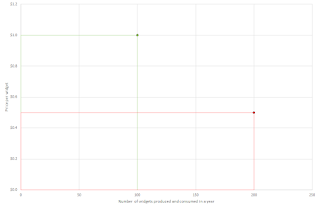In proper chronological order
to be written down at some point: on a blockchain-less cryptocurrency; on credit socialism; on a compendium of market socialism mechanisms, on a compendium of monetary rules, on moral deserts. 20250619_ On synthetic casuistry (800 words, limit judicial fiat and legal bloat by enforcing sentencing through linking to a few hundred synthetic cases only) 20250509_ On miscellaneous lesser ideas 20250203_ On a blockchain of nearly immediate finality (1200 words ,include all conflicting transactions in a block and check competing blockchains for mutual domination to achieve near immediate transactions finality) 20250122_ [RETRACTED] On an emergent block time 20250121_ On the poor man's NGDP targeting regime (700 words, issue, sell and buy unlimited quantities of consols whilst sterilising all net resulting inflows and outflows for a bare-bones automatic NGDP targeting regime) 20250114_ On degrees of moneyness [fluff piece] (1500 words, money can be placed in...



